Washington Rental Agreement

A Washington rental agreement is a legal contract between a landlord overseeing a rental property and a tenant who wishes to use it. Washington landlord-tenant law governs these agreements; rental terms must be within the limits allowed by law.
Washington Rental Agreement Types
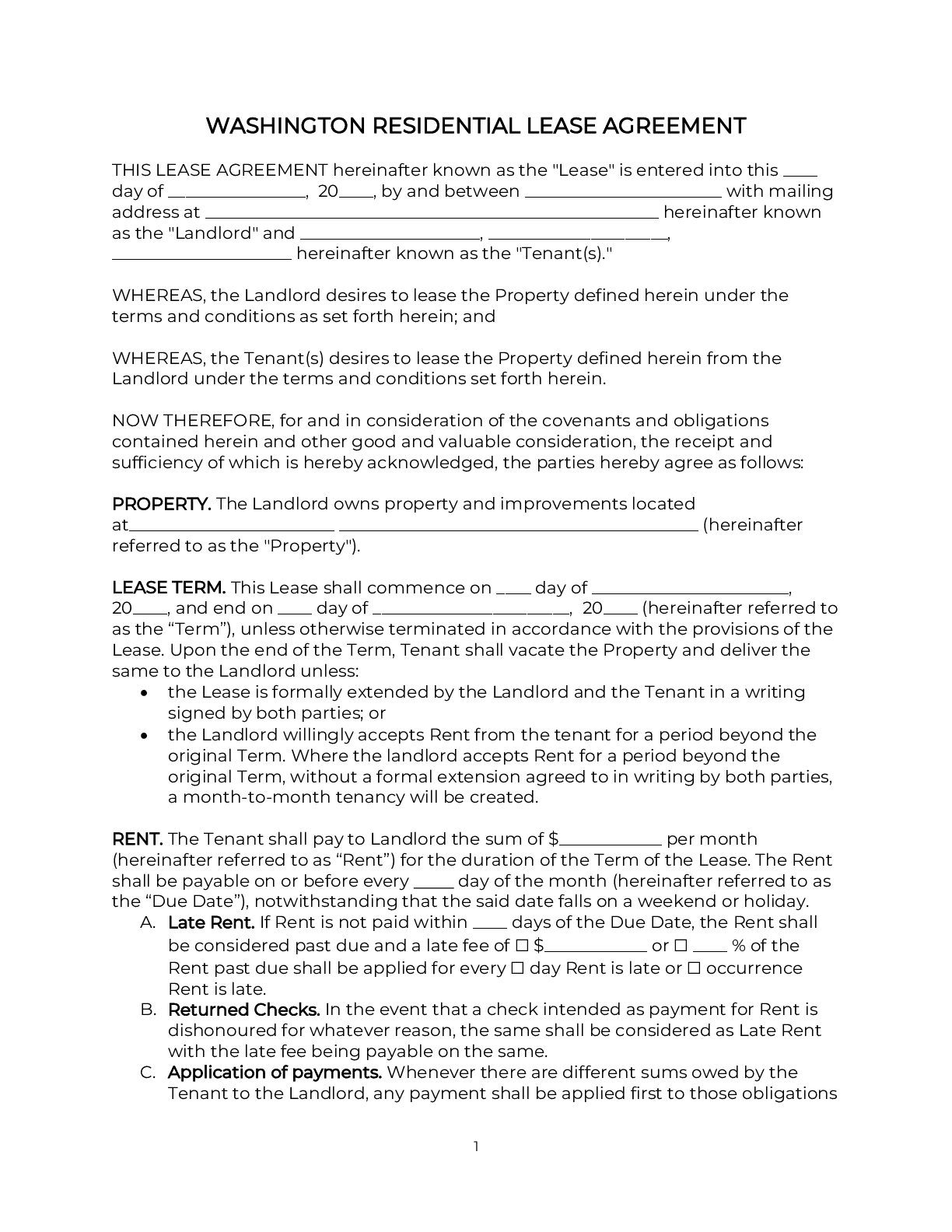
A Washington residential lease agreement (“rental agreement”) is a legal contract for a tenant to rent a residential property from a landlord, subject to terms and conditions agreed by all parties.
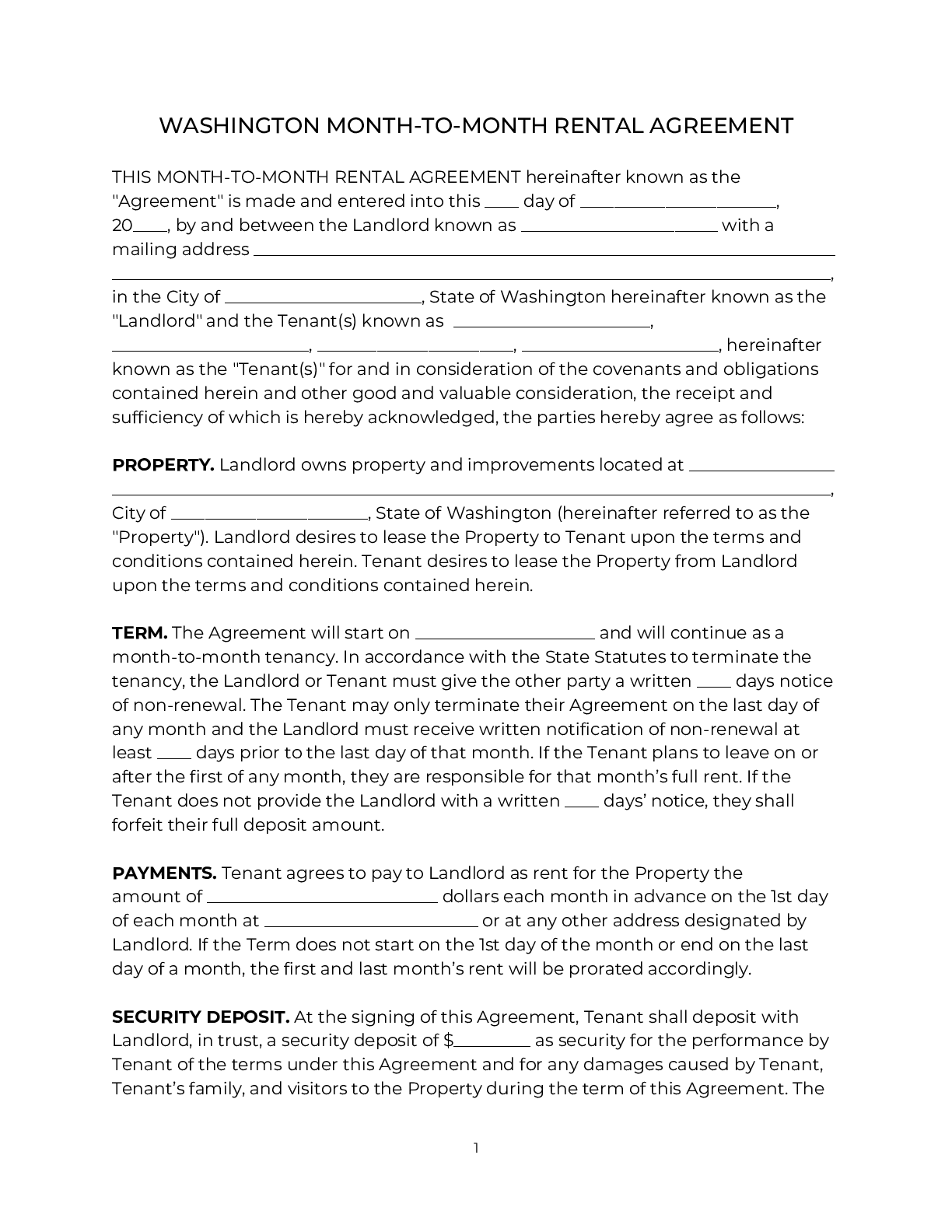
A Washington month-to-month lease agreement is a contract (not necessarily written) where a tenant rents property from a landlord. The full rental term is one month, renewable on a month-to-month basis.
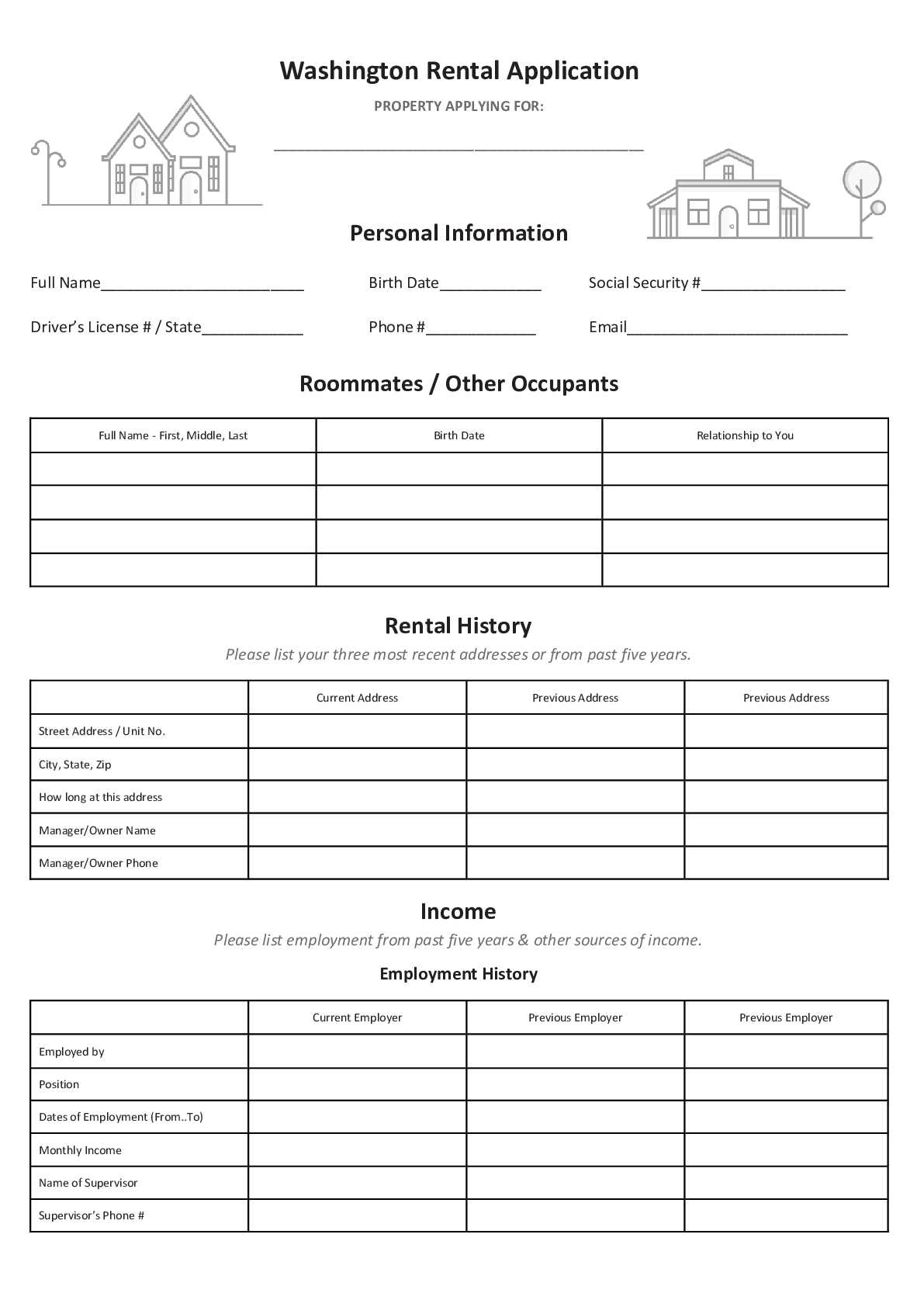
A Washington residential lease agreement (“rental agreement”) is a legal contract for a tenant to rent a residential property from a landlord, subject to terms and conditions agreed by all parties.
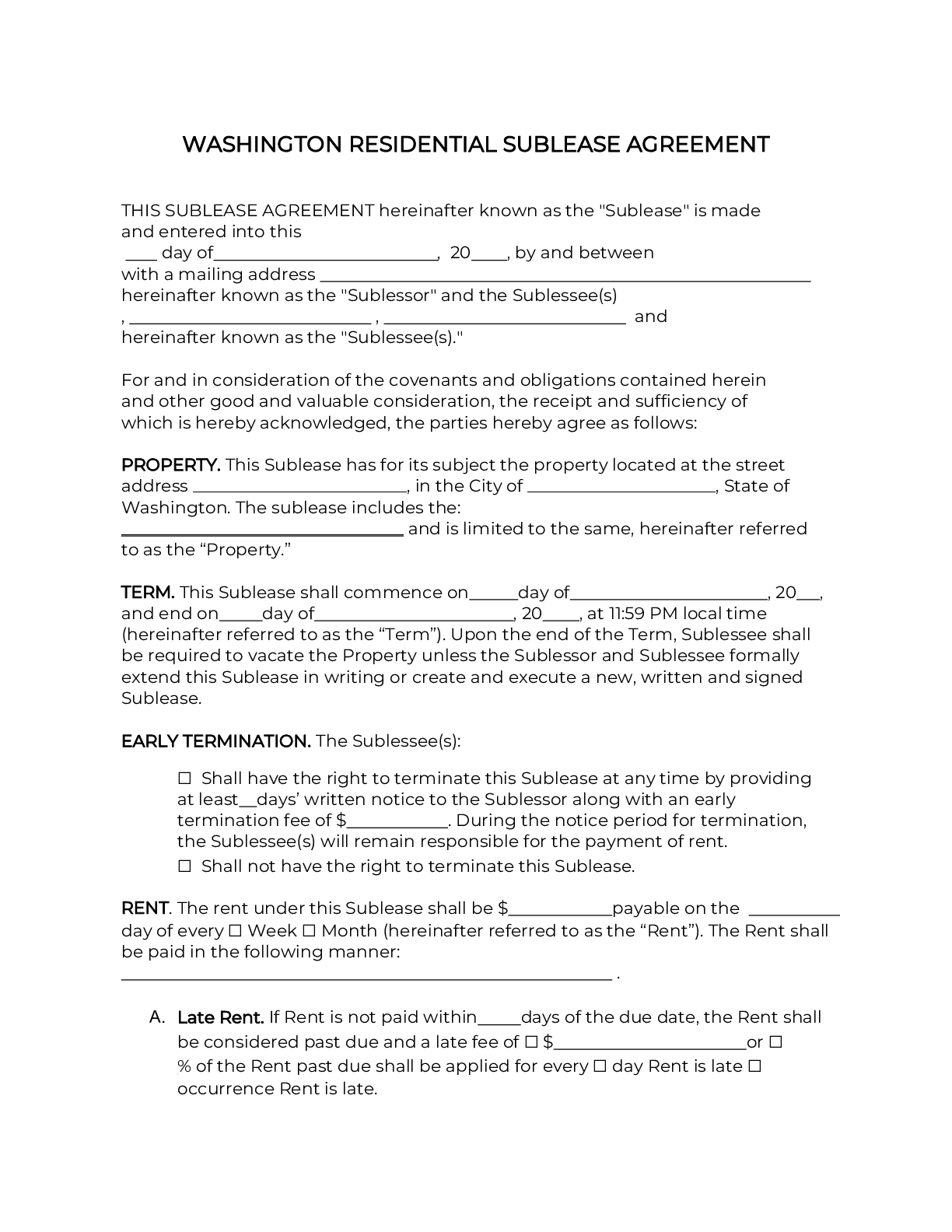
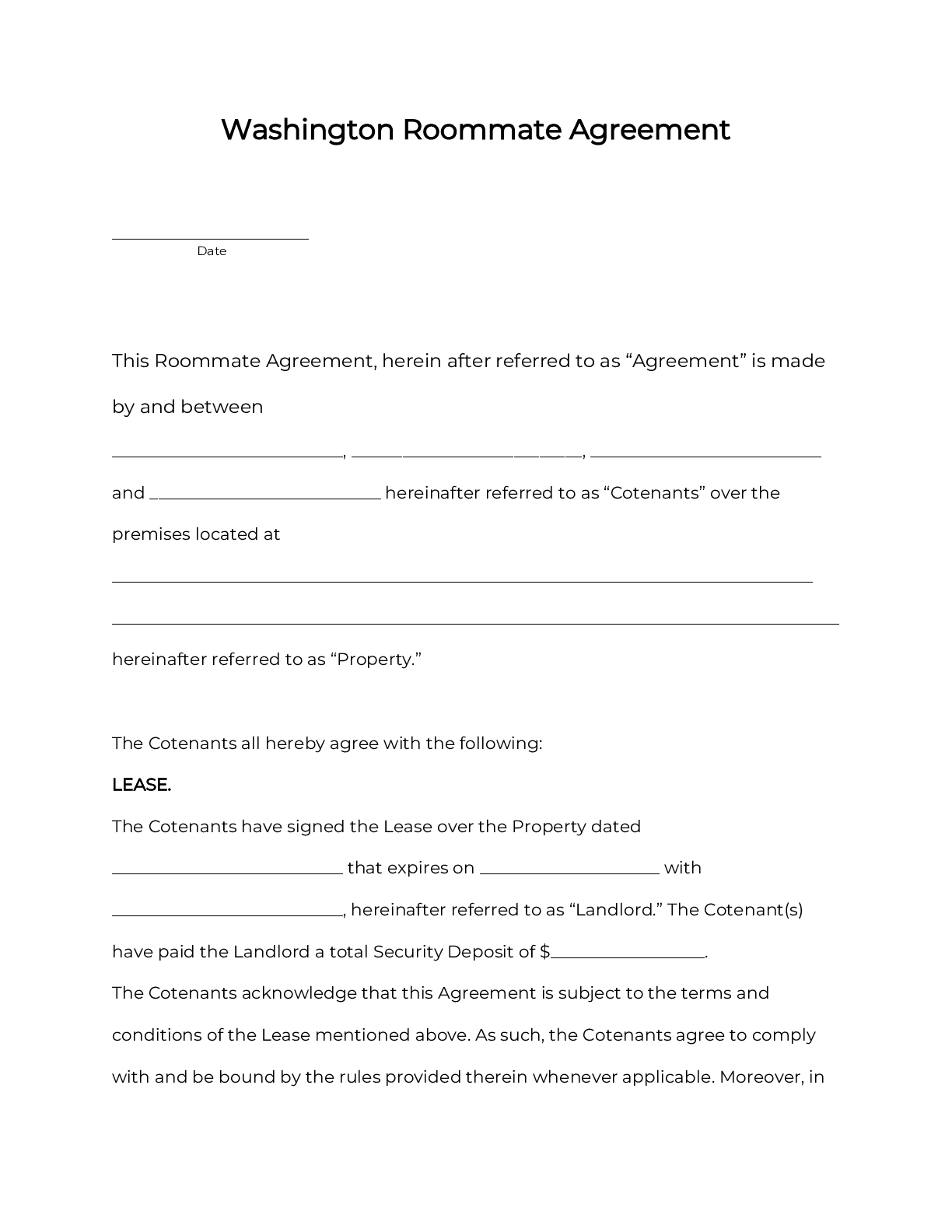
A Washington roommate agreement is a legal contract between two or more people (“co-tenants”) who share a rental property according to rules they set, including for things like splitting the rent. This agreement binds the co-tenants living together, and doesn’t include the landlord.
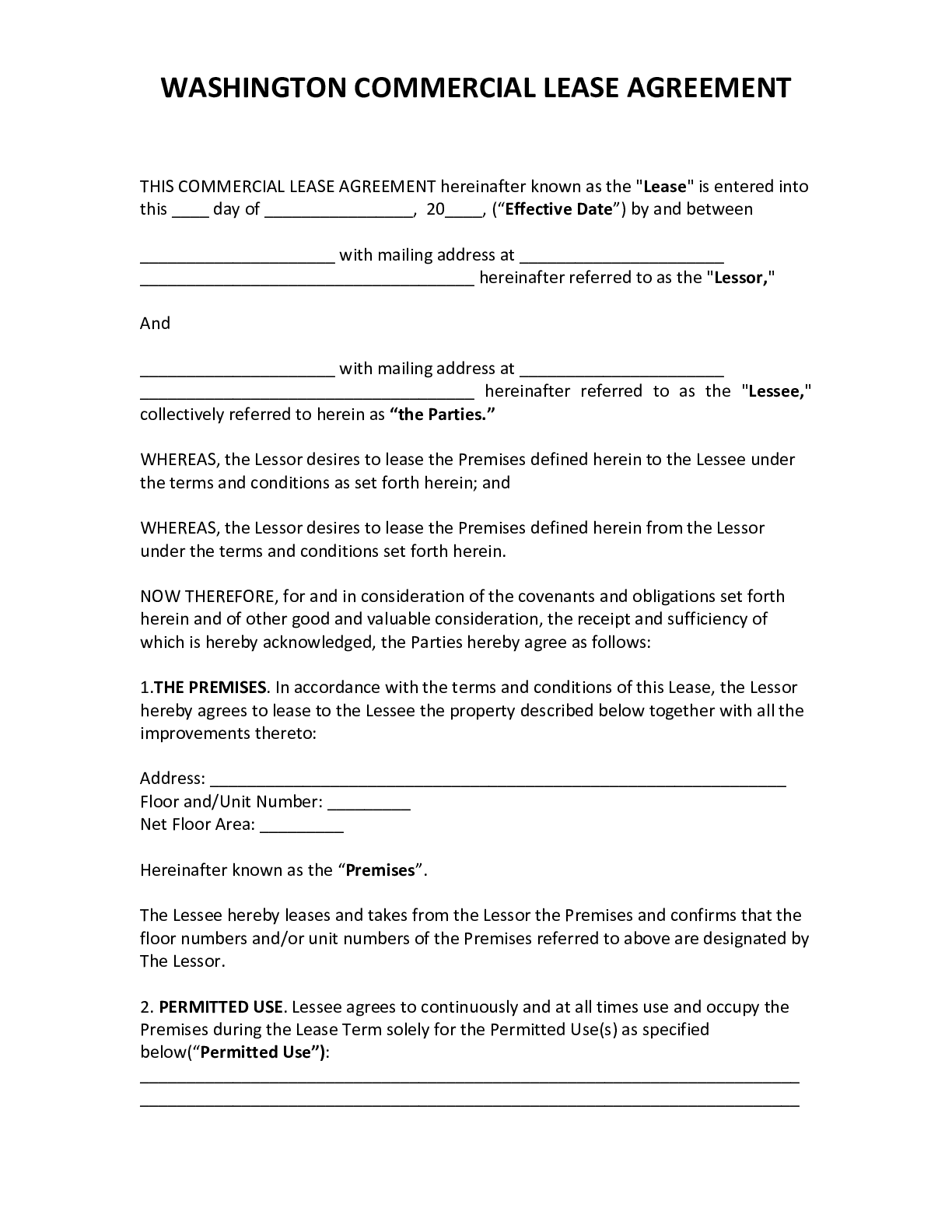
A Washington commercial lease agreement is a legal contract arranging the rental of commercial space between a landlord and a business.
Washington Required Residential Lease Disclosures
- Landlord’s Name and Address(required for all leases) – Washington landlords must provide contact information in the lease, to enable smooth communication and service of notice.
- Fire Safety and Protection Notice(required for some leases) – Washington landlords must provide a written disclosure or checklist detailing the property’s fire safety features and emergency evacuation routes. This must include whether or not the rental unit is equipped with operational smoke detectors, fire sprinklers, and alarms.
- Mold Disclosure(required for all leases) – Washington landlords must post a conspicuous notice or provide a disclosure in the lease, outlining mold risks and precautions relevant to the rental property.
- Move-In Checklist(required for some leases) – Washington landlords who collect a security deposit must take inventory of the rental property upon move-in with a written checklist, for compiling an itemized list of damages to deduct upon move-out. A landlord cannot deduct late for any item whose condition is not reasonably well described by the checklist. [1]
- Security Deposit Holdings Disclosure(required for some leases) – Washington landlords who collect a security deposit must disclose certain details about where and how the funds are held, for transparency to the tenant.
- Fees Disclosure (required for some leases) – Nonrefundable fees must be noted as such in the lease or other rental contract. This includes pet fees, access charges, and other expenses. Fees which are not disclosed as nonrefundable may otherwise be subject to refund when the lease terminates.
- Lead-Based Paint Disclosure(required for all leases) – For any property built before 1978, federal law requires that a Washington residential lease must contain a lead-based paint disclosure with an EPA informational pamphlet, plus notice of any lead hazards on the property.
To learn more about required disclosures in Washington, click here.
Some cities, like Seattle, may require additional disclosures. Local laws may apply, not just state laws.
Washington Landlord Tenant Laws
- Warranty of Habitability – Washington landlords can only rent out habitable property. Habitable property must have various features important to health and safety, such as hot water, heating, and smoke detectors (among other things). The landlord has between 24 hours and 10 days after proper notice to make repairs, depending how serious and dangerous the issue is. Failure to repair might let a tenant end the rental agreement, ask a court to order repairs or compensation, or repair and deduct for lesser repairs. Rent withholding isn’t allowed in Washington.
- Evictions – Washington landlords may evict tenants for rent default, lease violations, or illegal acts, among other things. The law requires a notice to pay, comply or quit, depending on the type of eviction. Most Washington evictions take between a few weeks to a few months. Unlike most states, many Washington properties have complex eviction requirements depending on their location and federal CARES act status. [2] [3] [4]
- Security Deposits – Washington does not set a maximum cap on the amount of a security deposit. Security deposits must be returned within 30 days of lease termination. [5]
- Lease Termination – Washington tenants can break month-to-month leases with 20 days of advance notice. A fixed-term lease can’t be terminated early without active military duty, landlord harassment, unit uninhabitability, or domestic abuse.
- Rent Increases and Fees – Washington does not set a maximum cap on rent increases, but any increases must be preceded with at least 60 days of advance notice. Late fees are limited to $20 or 20% of the monthly rent amount (whichever is greater), and bounced check fees are capped at $40.
- Landlord Entry – Washington landlords have the right to enter rental property for inspections, maintenance, showings, and emergencies. They have to give at least two days of written advance notice before entering, unless it’s an emergency situation.
- Settling Legal Disputes – Washington allows landlord-tenant disputes in small claims court, if the amount in controversy is less than $10,000.
To learn more about landlord tenant laws in Washington, click here.
Sources
No portion of any deposit may be withheld:
(i) For wear resulting from ordinary use of the premises;
(ii) For carpet cleaning unless the landlord documents wear to the carpet that is beyond wear resulting from ordinary use of the premises;
(iii) For the costs of repair and replacement of fixtures, equipment, appliances, and furnishings if their condition was not reasonably documented in the written checklist required under RCW 59.18.260; or
(iv) In excess of the cost of repair or replacement of the damaged portion in situations in which the premises, including fixtures, equipment, appliances, and furnishings, are damaged in excess of wear resulting from ordinary use of the premises but the damage does not encompass the item’s entirety.
…the plain language of the CARES Act notice provision requires that landlords subject to the act provide a 30-day notice to tenants prior to commencing an unlawful detainer action.
…the plain meaning of Section 4024’s 30-day notice to vacate provision is that it applies only to evictions stemming from nonpayment of rent.
…we conclude that the 30-day notice provision in 15 U.S.C. § 9058(c)(1) applies to all evictions of tenants living in covered dwelling units, not just those for nonpayment of rent.
Within 30 days after the termination of the rental agreement and vacation of the premises or, if the tenant abandons the premises as defined in RCW 59.18.310, within 30 days after the landlord learns of the abandonment, the landlord shall give a full and specific statement of the basis for retaining any of the deposit, and any documentation required by (b) of this subsection, together with the payment of any refund due the tenant under the terms and conditions of the rental agreement.








